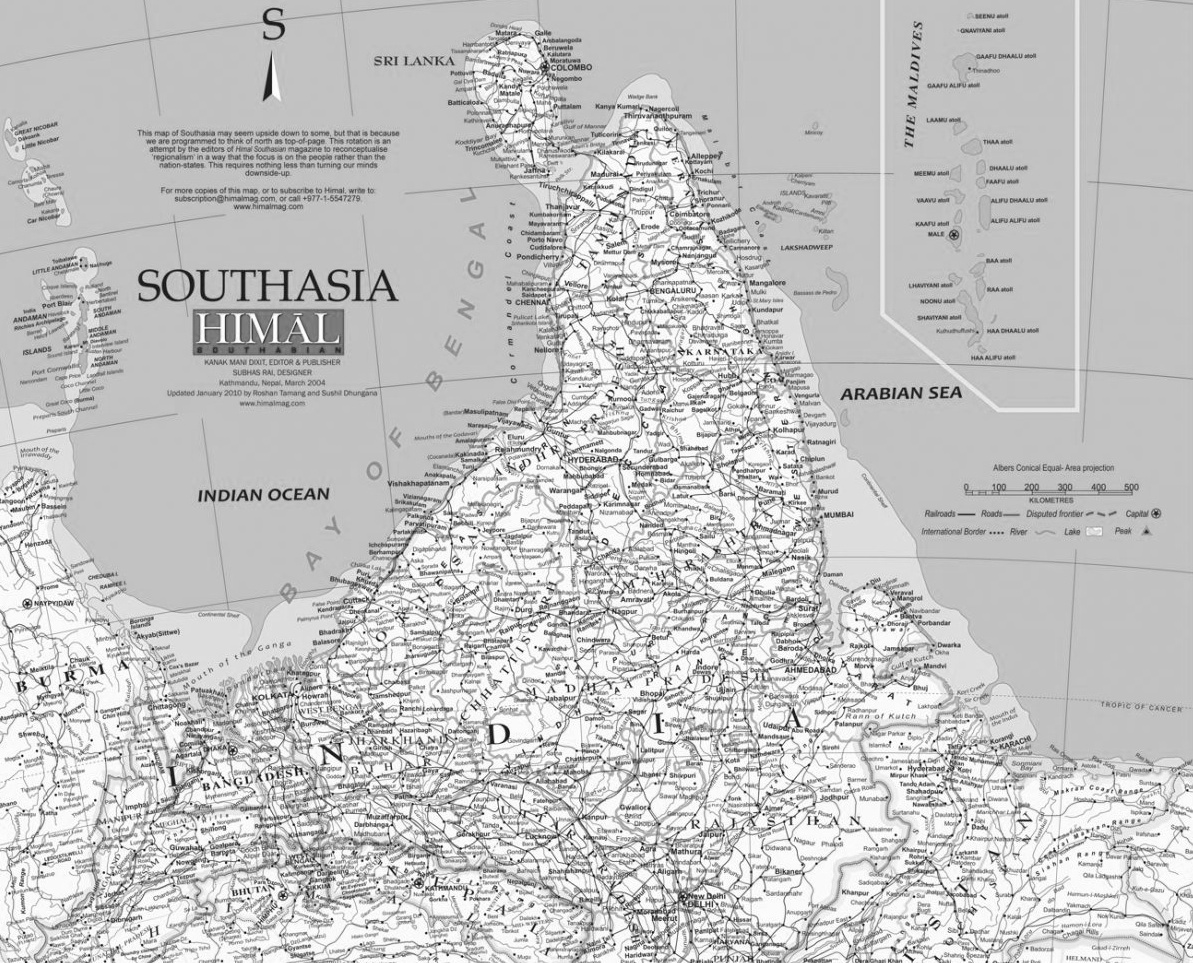Inspired by The Atlantic and The New Yorker
Himal Southasian is a quarterly news magazine covering South Asia, particularly the regions within or adjacent to the 2500 kilometer-long Himalayan range. For reasons of press independence it is published in Sri Lanka.
Nepali Journalist Kanak Mani Dixit founded Himal, the predecessor of Himal Southasian, in 1987 during his time at Columbia University. Mr. Dixit was inspired by magazines that reported on the complexities of American culture and news, such as The Atlantic and The New Yorker. He wanted Himal to reconnect the people of the Indus River Valley and Himalayas within a concept of a regional South Asian identity, rather than the limiting perspective of the nation-state.
The Nepalese revolution in 1990 inspired Mr. Dixit to bring Himal back to his home of Kathmandu.
South Asia: a regional community
Himal became Himal Southasian in 1996. Southasia (as opposed to South Asia) represents the idea that Southasia is its own entity, rather than being defined by its relationship to the rest of the continent. Himal Southasian differentiates itself from other international magazines by reporting on events that fall outside the narrative which limits regions to particular issues. The magazine does not alienate its South Asian readership by appealing to the American view, it instead relies on its journalistic merits and cultural allegiance to draw a wide readership. A leader in the digital age, Himal Southasian was one of the first magazines to go digital in the region, and has been accepting credit cards for billing payments since its inception in 1987. This has been a crucial service for its readership, which is split evenly in and out of South Asia.
A new view of the subcontinent
Dixit commissioned Subhas Rai to design a map which depicts South Asia turned 180°, putting the tip of India and Sri Lanka at the top. Instead of the subcontinent of India being the main focus of the regions, South Asia is depicted as more of a united region. Shubhanga Pandey, former chief editor of Himal Southasian, remarked that, “[The] ethos of Himal is carried quite well by that map.The whole point was to impress the fact that we are too used to, and we’re very complacent in thinking about the whole region in many different ways.” As the map has become a symbol of Himal Southasian, it has also conflicted with India’s legislation on how the country can be represented. After displaying the map during a lecture at Jai Narain Vyas University in Rajasthan Nivedita Menton was charged with anti-nationalism. The entire conference she was speaking at was suspended, all because one retired faculty member had complained. Equally iconic and contraband, the “right-side up” map created a stir and forced viewers to consider a world where “north” is not the same as the top of the world.
Activism led to arrest
Mr. Dixit built Himal Southasian to do real journalism, tell real stories. As an outspoken human rights activist he has been involved in many aspects of Nepali civil society. Sometimes his personal activism ran counter to the magazine’s survival, with some of his stances aggravating those inside the government. In 2016, the head of the anti-corruption agency had Dixit arrested on dubious charges of financial corruption. After the arrest, government agencies stopped responding to Himal Southasian's inquiries and grants that had already been pledged became inaccessible.The magazine was forced to reduce staff due to visa delays for non-Nepali employees. Both of these factors left Himal Southasian starved for resources, forcing it to close its Nepali operation in 2016.
Sri Lanka now home to Himal Southasian
Himal Southasian relocated to its new home in Colombo, Sri Lanka in 2018. The Sri Lankan government under the previous president Mahinda Rajapaksa from 2005 to 2015 had not allowed for much journalistic freedom, with some journalists being tortured and killed. However, a new coalition government in 2015 promised greater freedom of press, and Himal Southasian decided to take them up on the promise. Press freedom is still uncertain in Sri Lanka, but the magazine seized the window of opportunity. The worsening conditions in the rest of South Asia for journalism has not deterred the magazine from its central mission. Himal Southasian continues to define themselves by avoiding cliché writing and one-dimensional international tropes and stereotypes.
Himal Southasian was originally founded to challenge orthodoxies and report on the Himalayas. It still fulfills that mission and has expanded its coverage to include all of South Asia. The magazine is known for its thoughtful and non-partisan reporting on cultural issues, approaching them from a non-nationalist perspective. Each issue of Himal Southasian covers a different theme, and new products include newsletters, podcasts, and film screening events.
Roman Gautam is the current editor of Himal Southasian.
